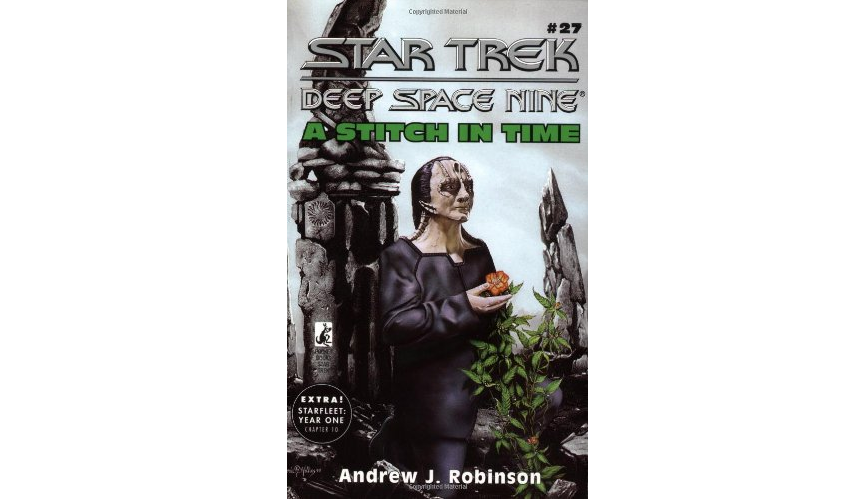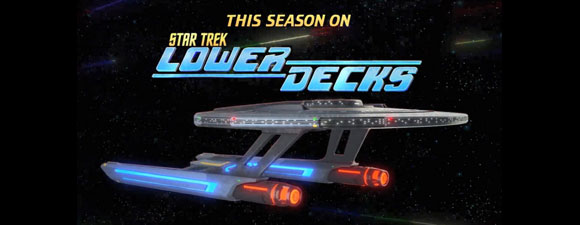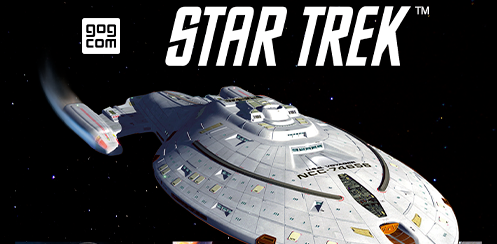Maximum Warp, Books One And Two
By Michelle Erica GreenPosted at March 20, 2001 - 12:01 PM GMT
 Title: 'Maximum Warp: Dead Zone: Book One of Two'
Title: 'Maximum Warp: Dead Zone: Book One of Two'
Series: Star Trek: The Next Generation #62
Authors: Dave Galanter and Greg Brodeur
Publication Date: March 2001
Format: Paperback
ISBN: 0-671-04749-3
Title: 'Maximum Warp: Forever Dark: Book Two of Two'
Series: Star Trek: The Next Generation #63
Authors: Dave Galanter and Greg Brodeur
Publication Date: March 2001
Format: Paperback
ISBN: 0-671-04757-4
What would happen to technological cultures if their power supplies were
rendered useless? That's the question at the heart of Dave Galanter and Greg
Brodeur's Maximum Warp, a pair of simultaneously released paperbacks.
At the beginning, "dead zones" devoid of subspace energy start popping up
all over the Milky Way, leaving Voyager as helpless in the Delta Quadrant as
is Deep Space Nine near the mouth of the wormhole. Warp-capable
civilizations face starving or freezing to death -- and because their
subspace communications don't work, they can't even alert others to their
plight. The Federation, Klingons and Romulans reach the brink of war as they
blame one another for the growing galactic catastrophe.
Picard gains assistance from a very unexpected source -- Ambassador Spock,
who has long worked undercover on Romulus. The Vulcan comes on board the
Enterprise with T'sart, a ruthless Romulan criminal responsible for the
deaths of thousands; he is despised by nearly as many Romulans as Federation
and Klingon citizens. While Riker, Troi and Data go on a mission to find
supplies to help the Enterprise infiltrate the Romulan Empire, Picard takes
his passengers on a roundabout route through Klingon space. Their
destination: the remote Caltiskan system, where an inhabited planet perches
in close proximity to a black hole. By all known laws of physics, the system
should not be able to exist. But by the time the crew discovers the
mechanism that maintains the Caltiskan sun, the rest of the universe faces
annihilation.
Maximum Warp tips its hand early in the first book by revealing that
T'sart is behind the crisis. Even before he understands the forces causing
dead zones to emerge across the galaxy, the Romulan commits brutal murders
and betrays a skilled officer who thinks of him as a mentor. T'sart drags a
reluctant Spock into the crisis by pretending he wants to defect to the
Federation, but as soon as the undercover Vulcan realizes the stakes for the
galaxy, he decides to bring the untrustworthy Romulan on his journey to the
Enterprise. Fortunately, Picard remains one step ahead of T'sart and his
henchman Lotre.
It's great to see Picard and Spock together again, and both are
well-characterized, with many references to the changes in the Vulcan over
the years. Picard wonders on several occasions whether Spock relates to him
differently than he related to a prevous Enterprise captain ("'Did you
correct Captain Kirk's grammar?'" he jokes at one point). T'sart is a worthy
adversary, though it's hard not to be incredulous that the Romulans have
allowed a loose cannon such free rein. T'sart refused membership in the Tal
Shiar and isn't very subtle about hiding his disgust for many of its
operatives, plus he betrays the loyalty of nearly all the power-hungry
individuals he gets to follow him. He is depicted as the polar opposite of
Picard -- who is friendly enough with his officers to enlist Riker in
helping him escape from boring Starfleet meetings, and who struggles
mightily with the realization that to save the galaxy, he may have to
sacrifice several crewmembers.
While Picard deals with the larger crisis, Data, Riker and Troi set out to
find a crucial component of their plan to infiltrate Romulan space. They
meet up with another Romulan would-be-defector who helps them through a
crisis, but when Tobin cannot repair his ship, the Enterprise crewmembers
are forced to sell themselves as slaves to protect their mission. Though
Riker cannot repress his concern for Troi, he befriends his clever, witty
owner, who discovers his secret and chooses to help him. Of course he
needn't have worried -- Deanna locks her lecherous master in a closet.
Throughout the story, Data has his emotion chip on, and his dry honesty and
naivete serve him just as well. When Troi is injured, for instance, he
reports on a bruise on her left cheek...then when Riker studies her face, he
amends, "Not that left cheek."
Unlike the heavy main plot, there's a lot of humor in these sub-sections,
which take place mostly in the second book. By that time Maximum Warp
has found its pace -- it takes awhile, since the timeline jumps around over
the period of weeks within which the crisis unfolds. It's hard to tell which
events are happening simultaneously in different areas of the galaxy, and
it's hard to figure out exactly how T'sart fits in among the Romulans, who
seem to despise him as much as the Klingons and humans. There's also little
to anchor the story to its post-Dominion War setting, other than the
alliances and personnel in place.
Brodeur and Galanter do a good job with all the regular Trek characters,
though it's an odd decision to set scenes on the Defiant with characters who
haven't yet been introduced in the Deep Space Nine book relaunch. The
vague dates make it impossible to figure out when these events happened to
Voyager. I'm not sure it was necessary or even advisable to set so many
scenes elsewhere in the galaxy -- we get to witness some events on the
Exeter and on Tellar that would have worked just as well as second-hand
reports in the voices of familiar characters. It's supposed to create a
sense of the scope of the emergency, but it creates a choppy narrative as
well.
Still, the story itself is compelling enough that these aren't significant
drawbacks. The writers introduce a fascinating Romulan scientist who takes
command of her ship, then is recruited by the Tal Shiar, but her loyalty to
pure science remains stronger than power or politics. T'sart's
Klingon-by-blood, Romulan-by-choice assistant Lotre is also an interesting
character, someone who epitomizes not IDIC but the nastier aspects of his
joint heritage. Governor Kalor, one of those Klingons whose dedication to
honor sometimes overrides safety and common sense, provides an interesting
foil for Lotre.
The conclusion involves some breathtakingly complex technobabble and
theories of physics that may make some readers scoff. The crew encounters a
device that makes the Guardian of Forever seem comparatively simple,
leading to a confrontation reminiscent of the ending of "All Good Things..."
on a larger scale and with higher stakes. All in all, it's a satisfying
ending, though one wishes for some context, some indication about why the
Bajoran Prophets and the Q Continuum don't involve themselves in the crisis.
Oddly enough, this fast-paced adventure story will probably be remembered
better for the strong characterizations of the crew than the sci-fi disaster
facing them.
Discuss this reviews at Trek BBS!
![]() Add TrekToday RSS feed to your news reader or My Yahoo!
Add TrekToday RSS feed to your news reader or My Yahoo!
Also a Desperate Housewives fan? Then visit GetDesperate.com!
Michelle Erica Green writes regular book reviews for the Trek Nation. She has written television reviews, interviews and other features for sites such as Fandom.com and SlipstreamWeb, as well as a a number of other web sites and magazines.



